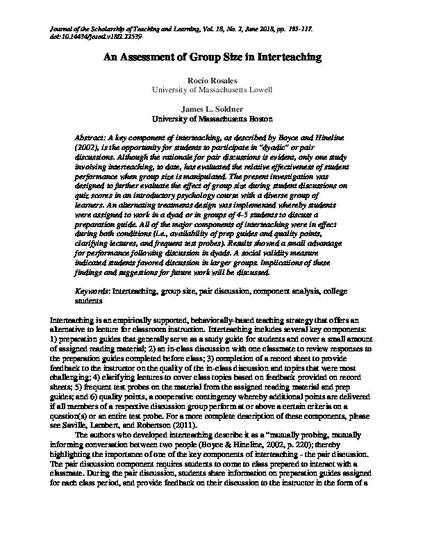
Article
An Assessment of Group Size in Interteaching
Journal of the Scholarship of Teaching and Learning
(2018)
Abstract
A key component of interteaching, as described by Boyce and Hineline
(2002), is the opportunity for students to participate in "dyadic" or pair
discussions. Although the rationale for pair discussions is evident, only one study
involving interteaching, to date, has evaluated the relative effectiveness of student
performance when group size is manipulated. The present investigation was
designed to further evaluate the effect of group size during student discussions on
quiz scores in an introductory psychology course with a diverse group of
learners. An alternating treatments design was implemented whereby students
were assigned to work in a dyad or in groups of 4-5 students to discuss a
preparation guide. All of the major components of interteaching were in effect
during both conditions (i.e., availability of prep guides and quality points,
clarifying lectures, and frequent test probes). Results showed a small advantage
for performance following discussion in dyads. A social validity measure
indicated students favored discussion in larger groups. Implications of these
findings and suggestions for future work will be discussed.
Keywords
- Interteaching,
- group size,
- pair discussion,
- component analysis,
- college students
Disciplines
Publication Date
June, 2018
DOI
10.14434/josotl.v18i2.22539
Citation Information
Rocio Rosales and James L. Soldner. "An Assessment of Group Size in Interteaching" Journal of the Scholarship of Teaching and Learning Vol. 18 Iss. 2 (2018) p. 105 - 117 Available at: http://works.bepress.com/james_soldner/25/
